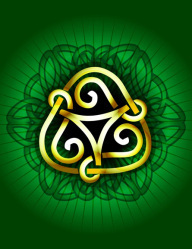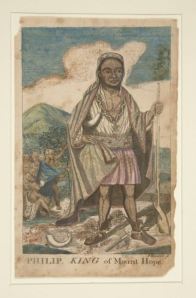The Irish Connection
 When the New England Puritans tried to understand the culture of the natives who were their neighbors, they thought immediately of the Irish. English Protestants had been colonizing Ireland since the first half of the 16th century. They regarded the Irish as “savages,” “uncivilized,” and “fifthy” people who lived in tribes, were semi-nomadic, lived in domed dwellings, did not hold private property, and failed to “plant any gardens or orchards,” or fence off and “improve their land.” The Irish were described as “lazy” and “wild,” “naturally given to idleness,” unwilling to work, and inclined to steal from the English.
When the New England Puritans tried to understand the culture of the natives who were their neighbors, they thought immediately of the Irish. English Protestants had been colonizing Ireland since the first half of the 16th century. They regarded the Irish as “savages,” “uncivilized,” and “fifthy” people who lived in tribes, were semi-nomadic, lived in domed dwellings, did not hold private property, and failed to “plant any gardens or orchards,” or fence off and “improve their land.” The Irish were described as “lazy” and “wild,” “naturally given to idleness,” unwilling to work, and inclined to steal from the English.
English colonists believed they had a God-given responsibility to “civilize” the Irish. In order to “teach duty and obedience,” the colonists burned Irish villages and crops, relocated people on reservations, and sometimes killed whole families. They made it a practice to take the heads of the Irish they had killed as trophies. The English then viewed the newly “cleared” land as “void” and available to English settlers.
When the English began to settle in the New World, the natives reminded them of the  Irish. Deerskin robes reminded them of “Irish mantels.” They noticed that native homes were “houses much like the wild Irish.” The swamps and thickets that New England Indians retreated to in wartime were “like the bogs to the wild Irish.” The colonists projected their view of the Irish onto the natives they encountered in New England. The image of the “savage,” once defined by their experience of the Irish, quickly expanded to include native Americans.
Irish. Deerskin robes reminded them of “Irish mantels.” They noticed that native homes were “houses much like the wild Irish.” The swamps and thickets that New England Indians retreated to in wartime were “like the bogs to the wild Irish.” The colonists projected their view of the Irish onto the natives they encountered in New England. The image of the “savage,” once defined by their experience of the Irish, quickly expanded to include native Americans.
These perceptions were oddly unconnected to reality. Instead of “lazy savages” who refused to plant gardens, the English explorer, John Smith, had actually found farmers with a highly developed agricultural system. All along the New England coast he saw fields “all planted with corn, groves, mulberries, savage gardens.”
But the colonists paid little attention to reality and, instead, invented their own image of natives, largely based on their perceptions of the Irish. I wonder how history would have been different if they’d based their behavior on actual observations and experiences instead of projections? Even more importantly, in what ways do we see other groups of people not as they truly are, but as we imagine them to be?
Tagged: 17th century, civilization, Colonial history of the United States, colonial New England, colonization, early America, English colonists, Indians, Irish, John Smith, Massachusetts Bay Colony, Native Americans, New England, Puritan, savages











